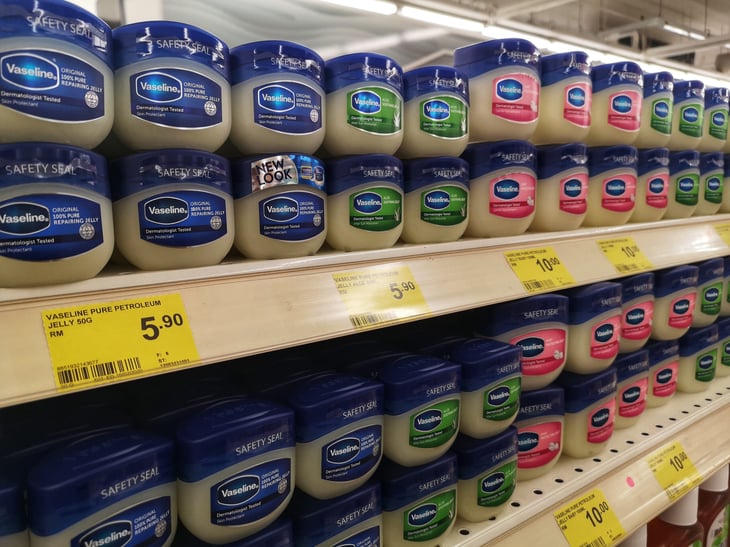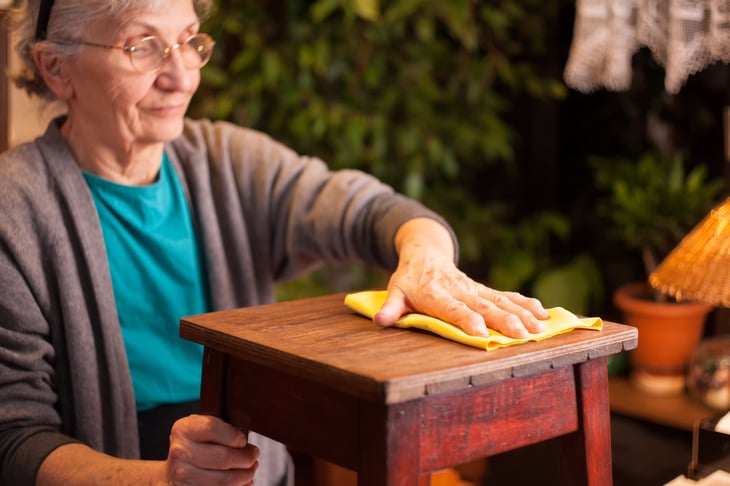
One day in 1859, a chemist named Robert Chesebrough visited Titusville, Pennsylvania. He noticed that oilfield workers were using something they called “rod wax” to dress minor skin wounds.
Rod wax was an oil-drilling byproduct. Chesebrough was intrigued enough to start refining the goop. When he introduced his finished product to the public, he called it “Wonder Jelly.” In 1872, it was named “Vaseline,” a word that the manufacturer says was derived from the German “wasser” for water and Greek “oleon” for oil.
Although other companies now manufacture the goop, some people still use the brand name “Vaseline” to refer to petroleum jelly, a mixture of natural waxes and mineral oils. Whatever you call it, you likely grew up with a jar in your home. And what a wonder this emollient continues to be: Consumers use it in dozens of ways both inside and outside the home.
Take a look at the following everyday problems and annoyances that you can solve with petroleum jelly, and you’ll never see it the same way again.
1. Water rings

Have you noticed water rings left by a wet glass on a table or other wood surface? Rub some petroleum jelly into the stain in a circular motion. Sabrina Fierman, vice president of the luxury cleaning service New York’s Little Elves, tells Architectural Digest that you can leave the jelly on as long as overnight if the ring is stubborn.
Mayonnaise is another effective option for this problem that you likely have on hand, as we explain in “11 Secret Uses for Everyday Items That Save Money.”
2. Pesky squirrels

Use petroleum jelly to keep squirrels away from bird feeders set on poles. Lather it on the pole, and the squirrels won’t be able to climb up the slippery surface.
WD-40 will also do the trick, as we report in “14 Ways WD-40 Can Save You Time and Money.”
3. Squeaky hinges

Got noisy or stiff hinges on cabinets or doors? Petroleum jelly works just as well as WD-40 — but without the smell or the mess.
“The petroleum jelly works its way into the hinge and adheres well, so it won’t run off and make a mess like oil or other lubricants,” Family Handyman explains.
The publication offers step-by-step directions with photos. All that’s required besides the petroleum jelly is a hammer, a rag and a finish nail.
4. Blisters

Apply a little bit of petroleum jelly on the parts of your skin that are prone to blisters, the American Academy of Dermatology Association advises.
This will help reduce the friction when skin rubs against skin or when skin rubs against clothing, thus helping to prevent blisters.
5. Short-lived fragrance

Before you spray on perfume or cologne, rub a little petroleum jelly onto your pulse points or wherever you apply fragrance. This will make the scent last longer, says Dr. Travis Stork, an author and former host on the TV talk show “The Doctors.”
“It holds that fragrance to your skin more so than if you just spray it right on your skin,” Stork explains.
6. Sensitive pooch paws

Before going for a walk in the snow, the American Society for the Prevention of Cruelty to Animals (ASPCA) suggests putting petroleum jelly on the tender pads of your dog’s feet.
“Massaging petroleum jelly or other paw protectants into paw pads before going outside can help protect from salt and chemical agents,” the nonprofit explains.
7. Rough, dry or chapped skin

Got super-dry skin on your feet? Coat with petroleum jelly just before bedtime, then put on socks. It feels weird at first, but you get used to it. In the morning, marvel at your skin’s softness.
Lips dry and flaky? Create an exfoliating scrub by mixing petroleum jelly with sugar. You can also make up a big batch of the stuff and give yourself a good rubdown, to remove dead skin.
Nostrils chapped from blowing your nose while sick with a bad cold? Gently apply some petroleum jelly to moisturize the dry skin and protect it against rubbing.
8. Makeup removal

Out of makeup remover? Or looking for another way to take off your makeup? Gently massage a little petroleum jelly on your face, then wipe with a soft cloth or tissue.
Dr. Mona Gohara, a dermatologist in Hamden, Connecticut, tells Allure:
“It’s light and lubricated, so the makeup slides right off without harming the skin.”
9. Risk of eczema

Apparently, it’s not just for a baby’s backside: Citing a study published in the medical journal JAMA Pediatrics, the Mayo Clinic reported in 2017 that a daily application of petroleum jelly on a newborn’s skin for the first six months of life can reduce the risk of eczema.





Add a Comment
Our Policy: We welcome relevant and respectful comments in order to foster healthy and informative discussions. All other comments may be removed. Comments with links are automatically held for moderation.